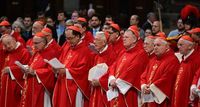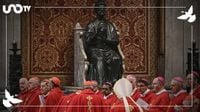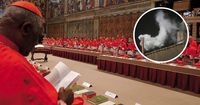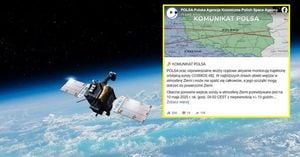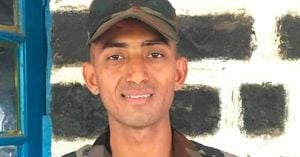As the world watches, the Vatican prepares to enter a period of intense anticipation and solemnity with the commencement of the conclave to elect a new Pope on May 7, 2025. Following the death of Pope Francis on April 21, 2025, the Catholic Church will transition into a phase known as ‘sede vacante’, leaving it without a leader until a successor is chosen. The upcoming conclave is set to begin with a series of significant events that will unfold throughout the day.
The conclave has been officially called for Wednesday, May 7, with activities commencing early in the morning. At 3 a.m. Rome time (2 a.m. in Mexico), a mass known as Pro Eligendo Pontifice will be celebrated in the Basilica of San Pedro. This ceremony is open to all cardinals, although only those under 80 years of age are eligible to vote.
Following the mass, the cardinal electors will enter the Sistine Chapel at 9:30 a.m. Rome time (8:30 a.m. in Mexico) to formally begin the conclave. Once inside, they will be isolated from the outside world until a decision is reached. The first smoke signal is expected to emerge from the chapel’s chimney at noon, indicating the outcome of the initial round of voting. If no consensus is reached, the smoke will be black, while white smoke will signify the election of a new Pope.
Should the first day conclude without a decision, additional rounds of voting will take place on May 8. A second smoke signal is anticipated at 5 a.m. Rome time (4 a.m. in Mexico), and if needed, a third signal will follow at noon. The process is expected to be rigorous and discreet, with recent papal elections taking between one to three days and averaging three to eleven rounds of voting.
The conclave will feature 133 cardinal electors, all under the age of 80, representing 70 countries across the globe. This diverse assembly is one of the most representative in the history of the Catholic Church, with each cardinal casting their vote on a special ballot. To elect a new Pope, at least 89 votes will be required.
In Peru, the significance of the conclave is heightened by the participation of two Peruvian cardinals: Carlos Castillo Mattasoglio, the Archbishop of Lima, and Robert Prevost, who heads the Diocese of Chiclayo. Although Prevost holds dual nationality and does not represent Peru in the conclave, his involvement adds a layer of interest for the faithful in the region.
While the conclave itself will not be televised, the mass and the subsequent events will be broadcast live by various media outlets around the world. Vatican News and Radio Vaticano will provide continuous coverage, with live streams available in multiple languages. In Peru, viewers can follow the mass on Vatican News’ YouTube channel at 3 a.m. local time. Subsequently, media outlets will cover the atmosphere at the Vatican and report on key moments such as the smoke signals that indicate the progress of the election.
The use of smoke signals, a tradition dating back to the 19th century, serves as a visible sign to the world regarding the outcome of the conclave. After each round of voting, the ballots are burned in a special oven. Chemicals are added to ensure the correct color: black smoke indicates no election has taken place, while white smoke signifies that a new Pope has been elected.
As anticipation builds, many are eager to see who will emerge as the successor to Pope Francis. The conclave is not only a pivotal moment for the Catholic Church but also a significant event for millions of followers worldwide, who await the announcement of their new spiritual leader.
In a world that often feels divided, the election of a new Pope holds the potential to unite believers under a common leader. The conclave represents a critical juncture for the Church, with cardinals tasked with selecting a figure who will guide the faithful through contemporary challenges. As the conclave approaches, all eyes will be on the Vatican, where history will once again be made.
In preparation for the conclave, measures have been taken to ensure the confidentiality and integrity of the voting process. From 3 p.m. Rome time on May 7, all telecommunications signals within the Vatican will be deactivated, ensuring that the cardinals remain isolated and focused on their critical task.
With the world’s attention directed toward the Vatican, the conclave promises to be a moment of profound significance, not only for the Church but for the global community of believers. As the cardinals gather to deliberate and vote, the outcome will likely have far-reaching implications for the future direction of the Catholic Church.
The conclave is a reminder of the enduring traditions of the Catholic faith, as well as the solemn responsibilities that come with leadership. As the smoke signals rise from the Sistine Chapel, the hopes and prayers of millions will be with the cardinals as they embark on this sacred duty.
In the coming days, the world will witness the unfolding of a historic event, steeped in ritual and significance, as the Catholic Church prepares to welcome its new leader.
